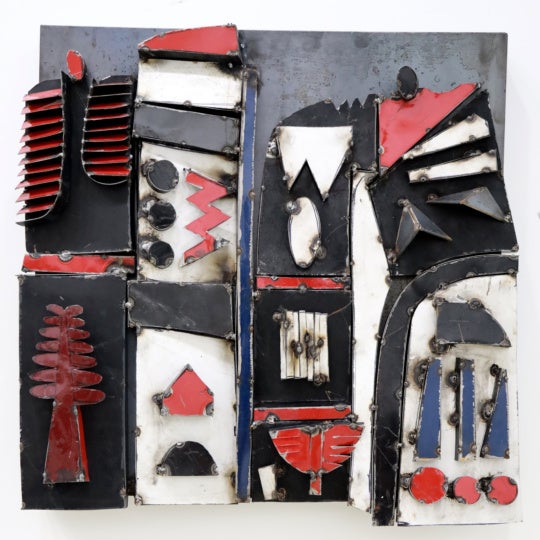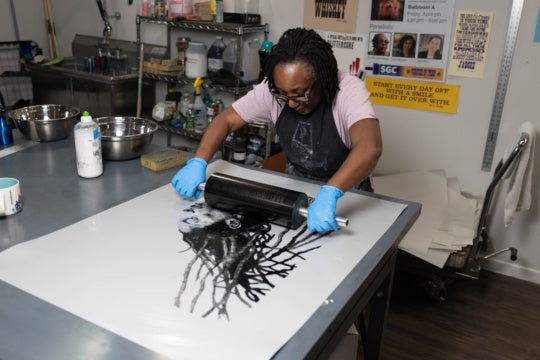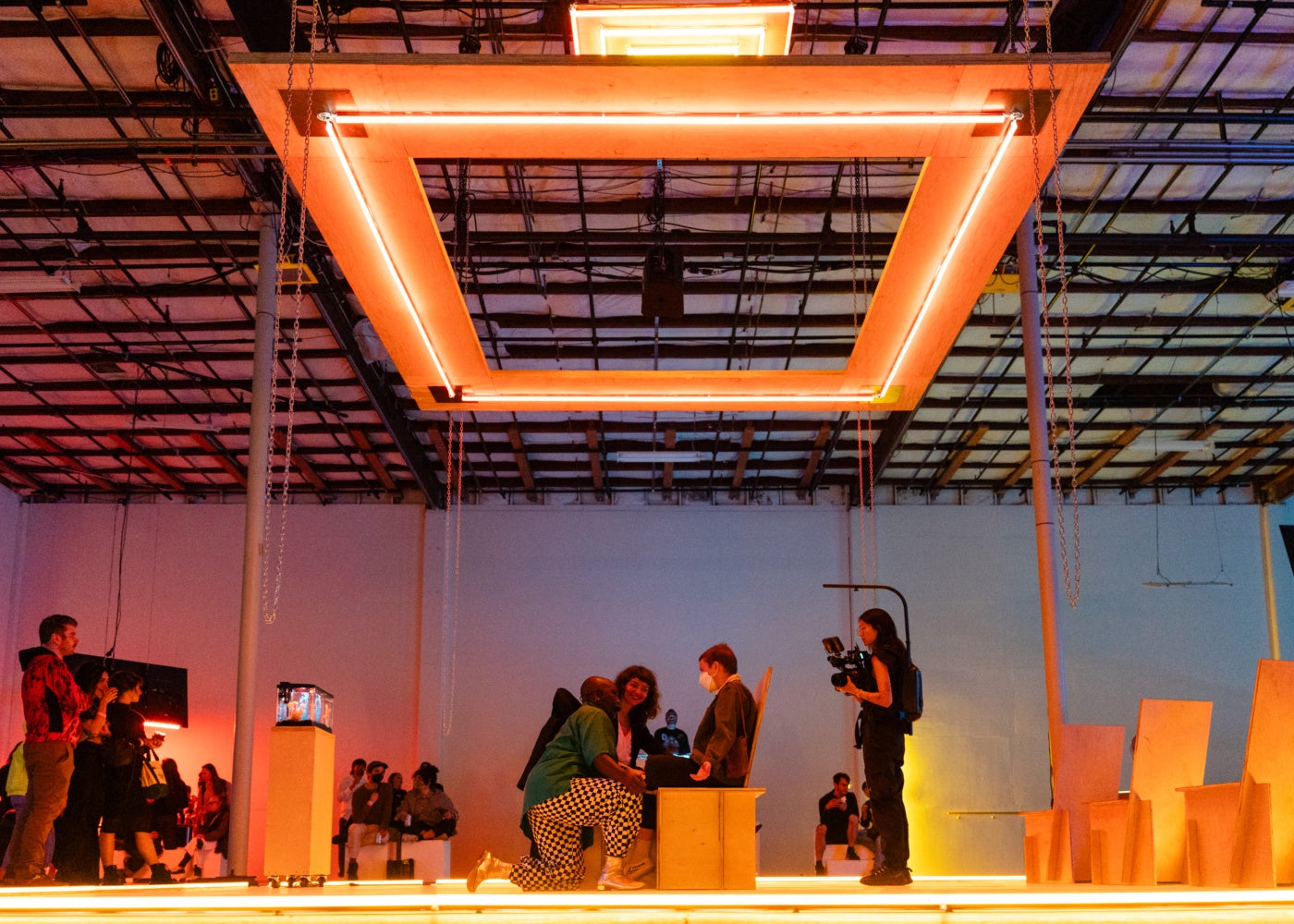
Autumn Knight—born and raised in Houston, known and celebrated for her alchemical practice that melds together the artist’s theatrical training with a deep study of the psychology of social interactions—often embraces the technology of spectacle and surveillance to heighten the stakes of the performance space. I first saw Autumn Knight perform in 2018 when I was working the door at her experimental performance-for-video talk show SANITY TV [2016-2019]. At the last minute, my manager switched spots with me so I could sit in the audience. Not knowing what to expect, I spent 60 minutes entranced by Knight’s authoritative but auspicious technical directorship and crowd-work. Equal parts Oprah in the late 1990s and Adrian Piper, the artist’s methodology to both commanding an environment and garnering audience buy-in has stuck with me, coloring a renewed understanding of my role as an audience member.
The first of a three-part suite of performances exploring the Italian concept “dolce far niente,” or the “sweetness of doing nothing,” Autumn Knight’s NOTHING#15: a bar collapses the proscenium in on itself, proposing a multisensory environment that embraces the sensuality of mundanity; encouraging viewers to linger in the agency of choice. Staged in Portland Institute for Contemporary Art’s (PICA) vast main warehouse and programmed for the organization’s annual Time-Based Art festival, I entered NOTHING#15: a bar with butterflies buzzing in my stomach—anxious not only to see this new work, but to witness the audience become enmeshed in one of Knight’s worlds.
Without typical theater seating, a stage, or curtains, guests milled about, waiting for the work to “begin” in the canonical sense. Knight sweetly affirmed into her headset: “We can keep doing this; it’s all a rehearsal! It’s a performance after all,” soundly foreshadowing the many directions this hybrid performance/experience/rehearsal could and would take.
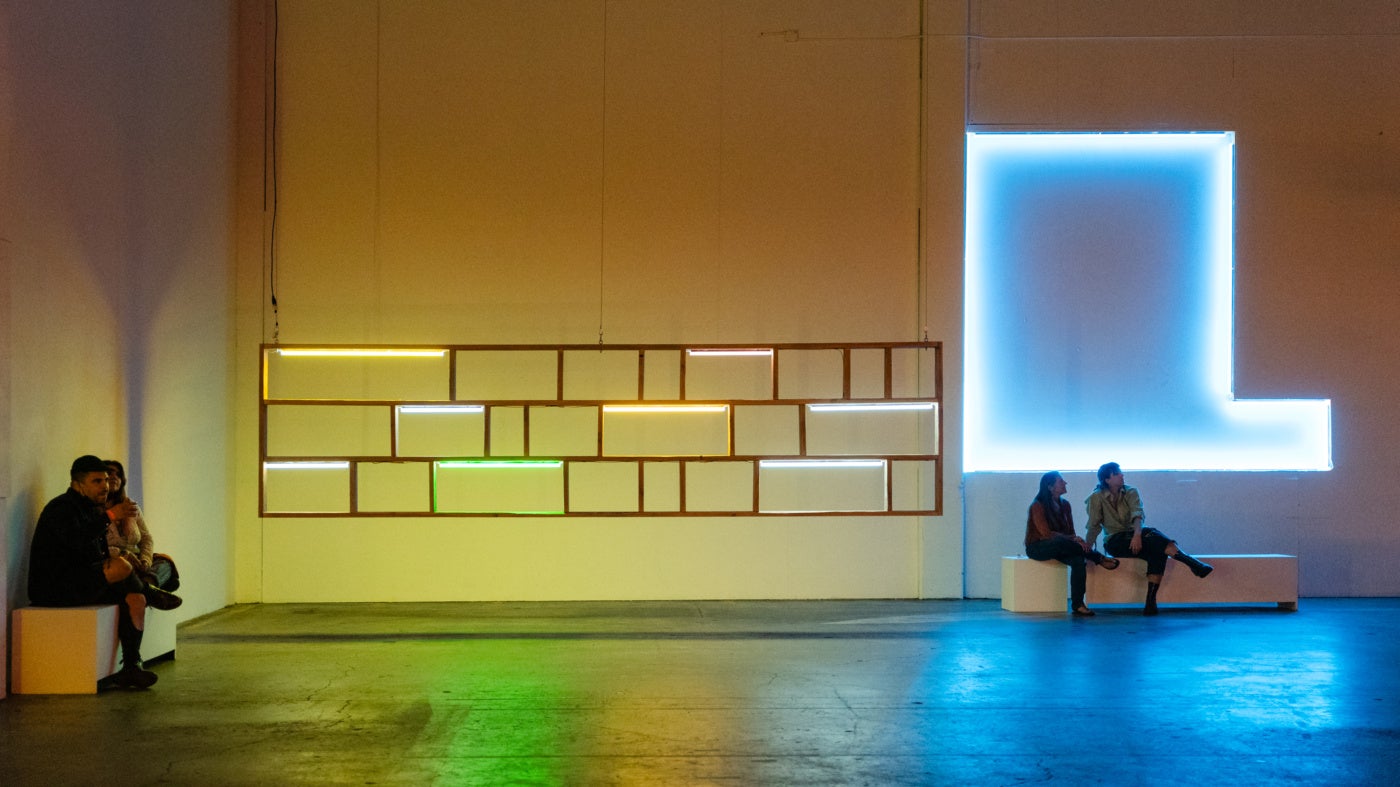
In the center of the space, bathed in yellow and blue LED lighting reminiscent of the soothing conceptual works by James Turrell and Dan Flavin, there was an arrangement of chairs where audience members were invited to sit and, with Knight’s close guidance, interact with one another. Above the main seating area, a wooden square hung from the ceiling by chains mimicking a bar at a pub or nightclub. The bar was continually lowered by PICA technical staff at the artist’s request throughout the evening. A roaming camera crew captured a live feed of interactions punctuated by an intoxicating DJ set by fellow Houston native Flash Gordon Parks. Knight meandered through the space, stopping to check in with her audience, to have a sip of Topo Chico or spritz a bergamot-based scent into the air, inviting pairs to enter a temporary, constructed, and consensual “host” and “client” social contract.
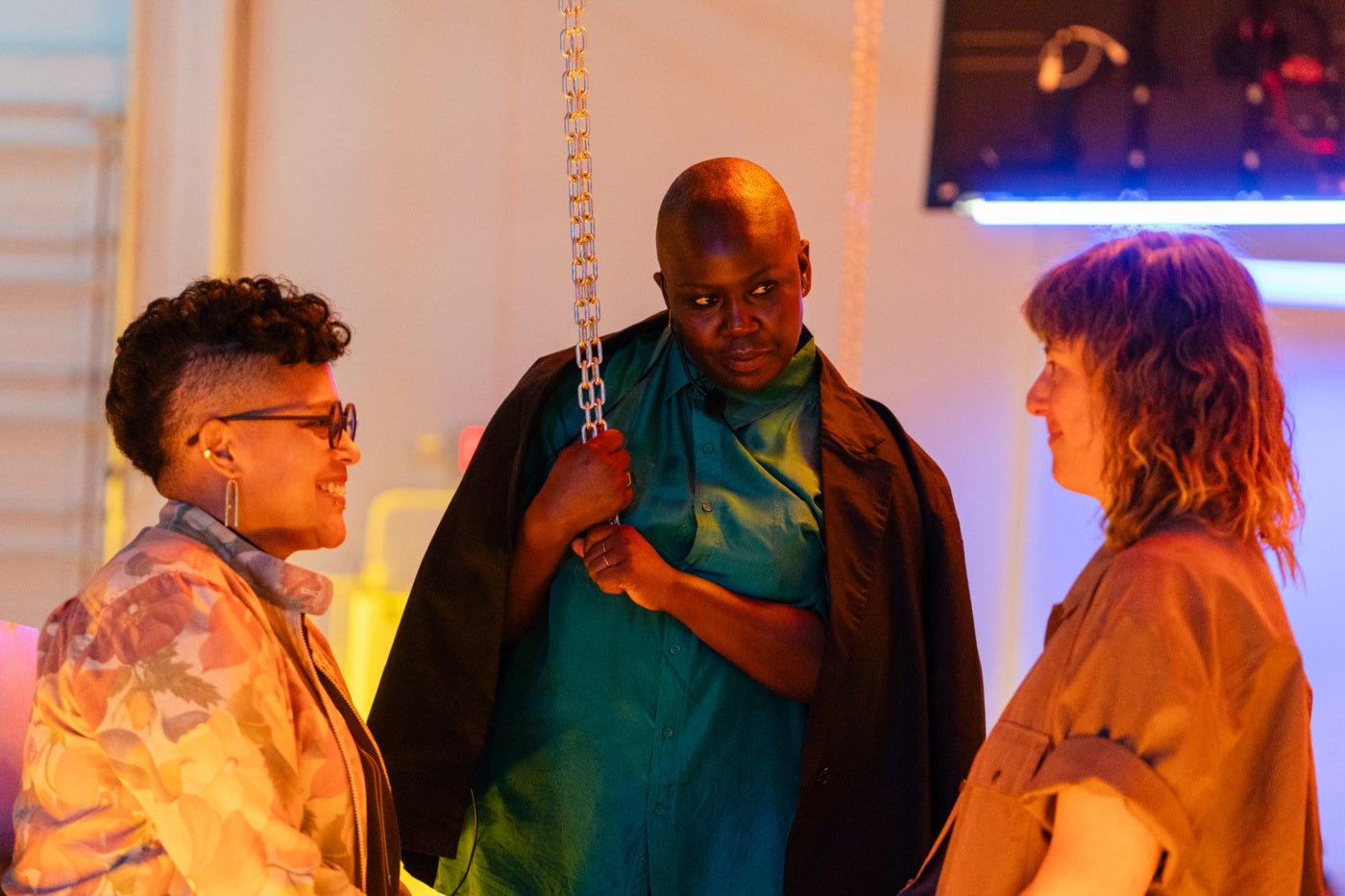
As Shalamar and The Jones Girls reverberated off the warehouse walls, some hosts fed their clients grapes; others were instructed to shower their partners with compliments such as: “You were an amazing child to your parents.” If a host failed to make their client throw their head back in laughter or look genuinely interested in their advancements, Knight asked them to try it again and again and again. The artist’s early proclamations about rehearsing were not merely to hear herself speak; failure became generative in this performance, spawning potential connections between participants and, importantly, reminding her audience of their own autonomy in this experience. As everyone could try again or, perhaps, decide not to try at all, increasing the threshold for vulnerability and honesty, the bar for inclusion was lowered. This climate of encouragement and play, further demonstrated by the literal lowering of the wooden bar from the ceiling at the halfway mark, was eerily refreshing in the manner in which it was didactic. Knight’s desire to provide a visual representation of the social theories at play was functional in its demarcation of the passage of time within the performance and, according to an email exchange with the artist, “the lowering of the bar erases what previously occurred, to release expectations for a successful interaction.”
Each day is brimming with rules and repercussions concerning what we do with idle time—and these expectations equally loom over the theater—this temporary space that can be used as we see fit is both anarchic and erotic. The format of a “night out at the bar,” an environment synonymous with debauchery and indulgence, works seamlessly with Knight’s acumen for encouraging her audience to lean into desire, to play, to choice, to absurdity. As everyone became acclimated, the opportunity to watch, be watched or hide only heightened. In one instance, while sauntering by someone seated, the artist said loudly, “I know you like to watch.” Capturing the essence of NOTHING#15: a bar, and functioning as a double entendre about voyeurism and performance art, this small comment gets to the root of Knight’s capacity to make each gesture serve the greater experiment. When asked about her approach to facilitation, the artist spoke to the economy of choice, noting that “perhaps agency is sensual.” Despite an air of anticipation that hung over the evening, all actions performed were inconsequential—leaving participants spoiled with options and acting on actual inclinations.
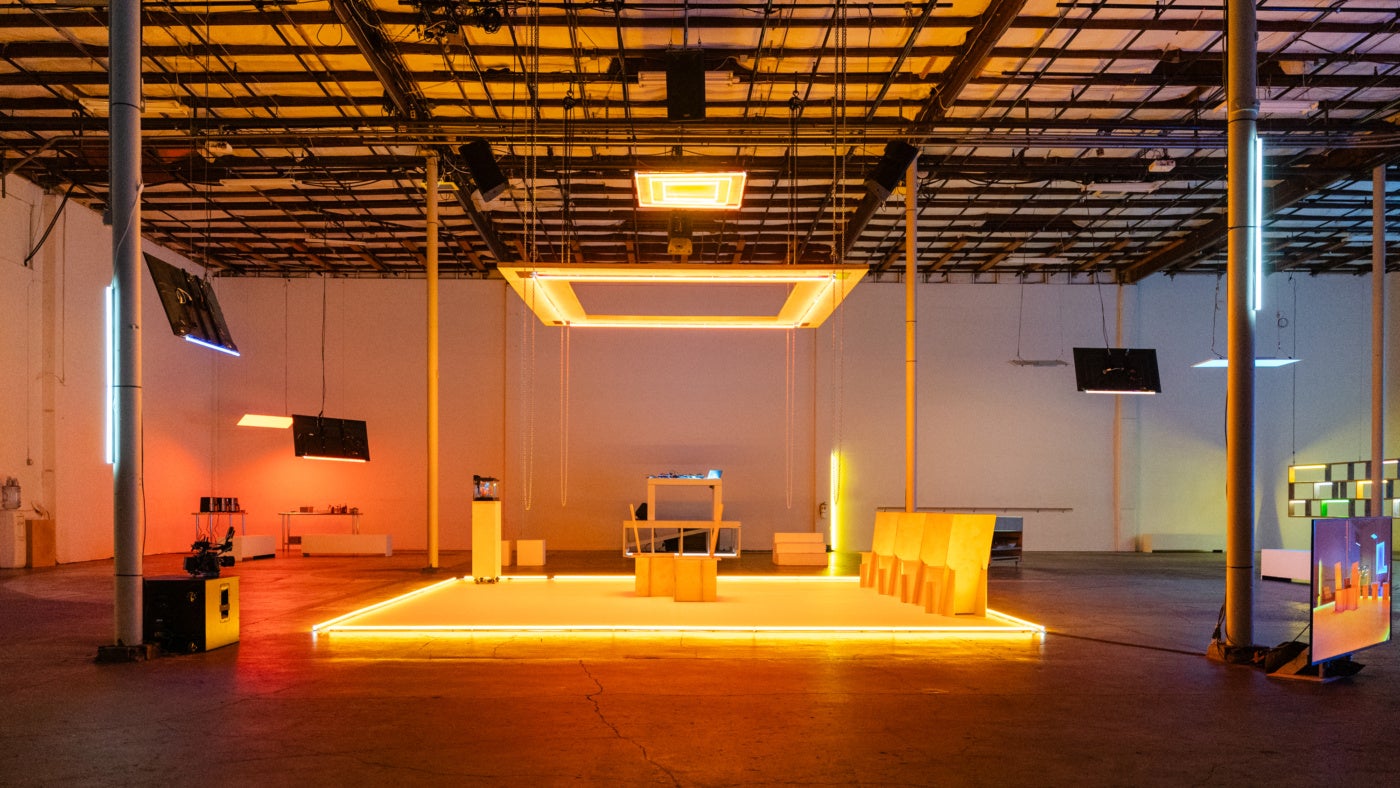
Each quotidian experience within the warehouse smashed into each other, creating a kaleidoscopic melange of sights and sounds. Still, through the artist’s investment in performativity as a practice and her unique approach to commanding an audience, the nothingness participants partook in was deeply pleasurable. Almost six years since my first encounter with Knight’s work, the artist remains committed to expanding the grammar of theater and performance. With NOTHING#15: a bar, Knight transformed the night into a seductive “choose your own adventure,” splintering the archetypal and often unspoken agreement between artist and audience.
Each quotidian experience within the warehouse smashed into each other, creating a kaleidoscopic melange of sights and sounds.
As the performance unfolded over three hours, it became obvious that Knight was truly at the helm of the evening, orchestrating every aspect of this experience despite the relaxed and sovereign ambiance. Her omnipresence, most tangible when you could hear but not see the artist, created a tension between order and chaos that remained constant. Concurrent to the central experiment, guests mingled about watching the live stream on various screens, grabbed drinks from a fully functioning bar, laid on bean bags, sat in bleachers, ate fresh french fries made by PICA artistic directors Kristin Kennedy and Erin Borberg Doughton, had side conversations, flirted, and danced—all five senses were provided for here. While the audience’s every need was anticipated and provided for, producing an almost “perfect” environment, the artist slickly maintained authority by creating an all-encompassing performance/space. Although audience members and participants were then left to negotiate their relationship to the direction and feedback provided and engage how they saw fit, attendance—even at its lowest degree—constitutes participation in the case of this performance. Commanding a room like this, with its seemingly endless features, is no small feat and Knight’s improvisational but methodical dramaturgy was powerful to witness. From the folks standing in the shadows observing to the “hosts” tenderly stroking their “client’s” cheek, she balanced her attention between various groups of people, equalizing all levels of participation. By refusing the hierarchy of engagement, every action within the warehouse is recognized as part of the total performance without consequence.

